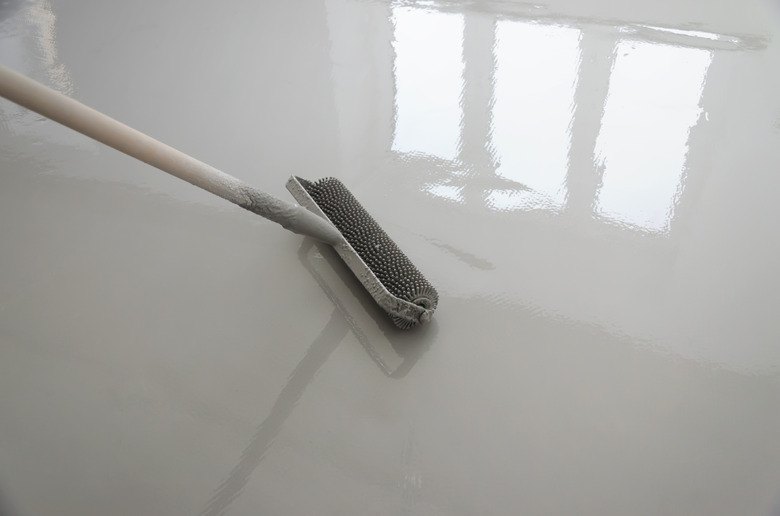How To Clean & Seal A Concrete Basement Floor
It may be the most used flooring choice for basements because of its durability, but even the most durable concrete basement floor can fall prey to wear and tear over the years. This seemingly impenetrable surface can show grime and get stained in high-traffic areas and become chipped or cracked due to the normal settling that happens in a home's foundation.
When to Seal a Concrete Floor
When to Seal a Concrete Floor
When a stain or crack penetrates the sealant on this hard-wearing flooring, you need to address the issue before it becomes a bigger problem. Sealing a basement floor is a process. It needs to be thoroughly cleaned, repairs need to be made to any imperfections in the surface and the sealant needs to be applied without gathering in joints that need to remain untreated.
Cleaning a Concrete Floor
Cleaning a Concrete Floor
Harsh chemicals can damage the concrete flooring in your basement. Homemade cleaners can be effective and inexpensive. A commercial concrete stain remover needs to penetrate the porous material without damaging or discoloring the surface.
Dirt and dust that collects on the surface of your concrete floor can get ground in. Simple stains can be removed with a basic mix of a gallon of warm water and a 1/8 cup of dishwashing liquid. Scrub the floor with this gentle cleanser and rinse well.
For more difficult stains, baking soda works well on concrete and helps to remove any lingering odors. Never use vinegar, lemon juice or other acid-based products on your concrete flooring. The acid can eat through the sealant and the porous surface.
Sealing Basement Floor Seams
Sealing Basement Floor Seams
A major mistake homeowners make when using a basement floor sealer is sealing the gap between the basement floor and the wall. This may seem like a good idea to make sure no moisture gets in, but it actually can create more damage.
The gap between the basement floor and the wall is called the cove joint. The foundation is poured first and then the basement flooring is poured once the walls have cured. This creates a small gap between the floor and the walls that keeps the foundation strong.
When groundwater rises around your home after a heavy rain, it will begin to push into any cracks or fissures in your foundation. Without the cove joint, the water will inevitably find another way into your home, which can cause cracks in your foundation.
Sealing Concrete Floors
Sealing Concrete Floors
There are many types of sealant to choose from or you may decide to use basement floor paint for a pop of color. After the floor is completely dry from cleaning and all repairs have been made and allowed to dry, apply the sealant with a long-handled roller. Start at the back of the room and apply the sealant as you work toward an entryway.
Roll the sealer in a thin layer using even strokes. Work in small areas and overlap the strokes as you move along. Be generous with the amount of sealant on your brush so you don't have thin layers that can be prone to peeling and chipping.
Allow the sealer to cure for a minimum of 24 hours before you move furniture or appliances back into the space.
